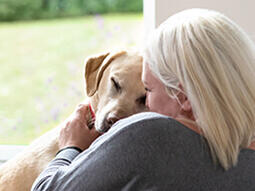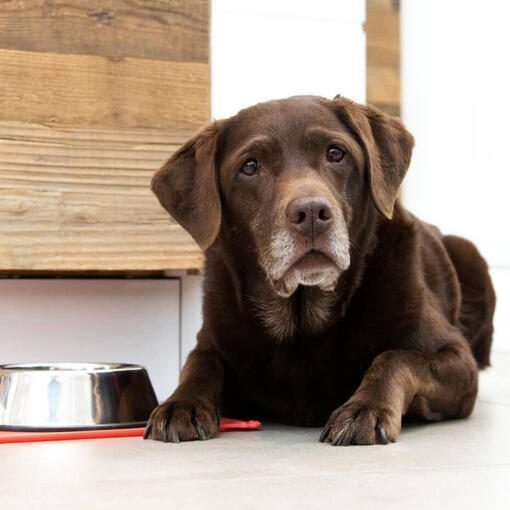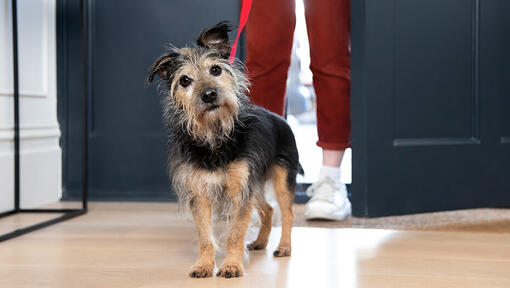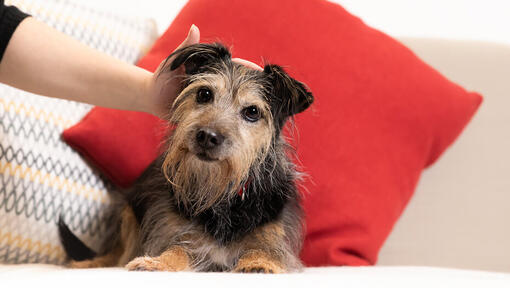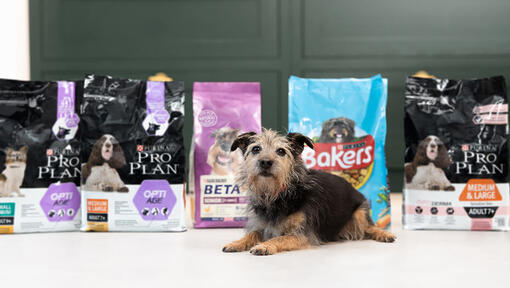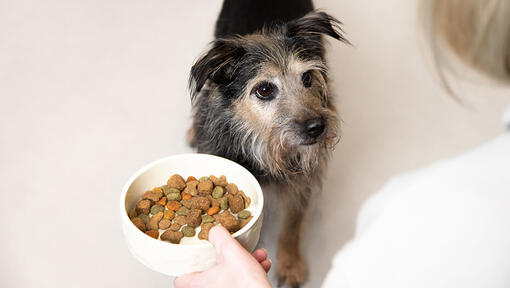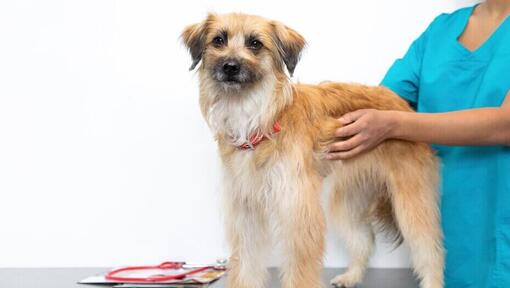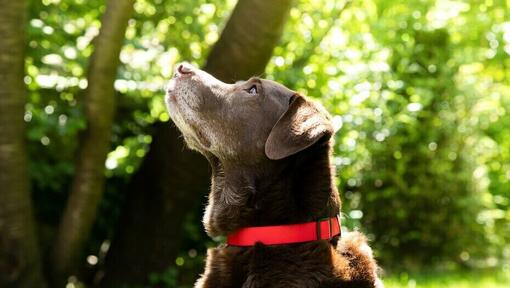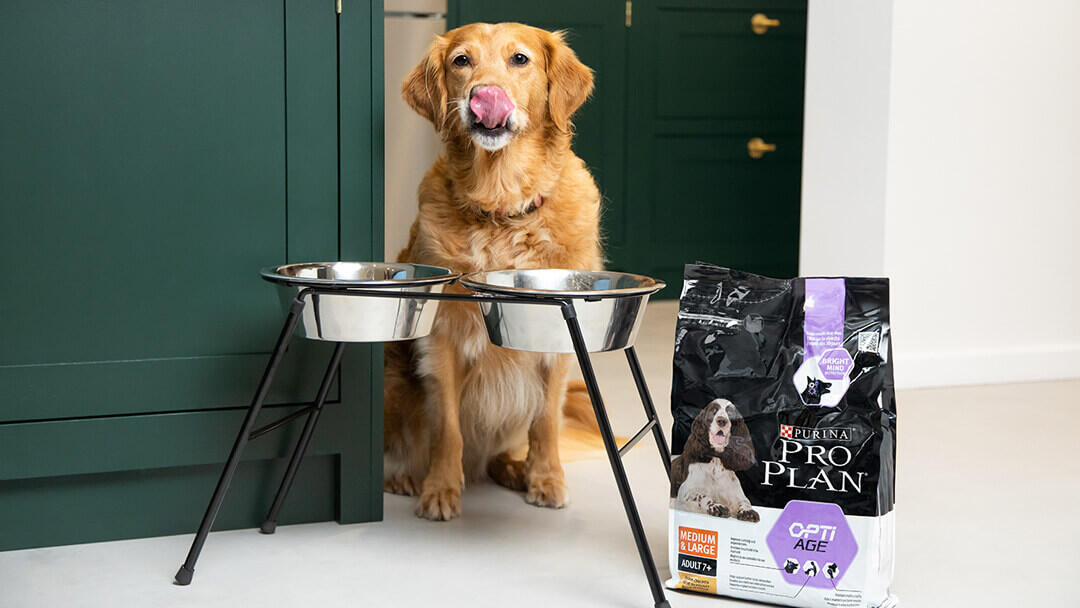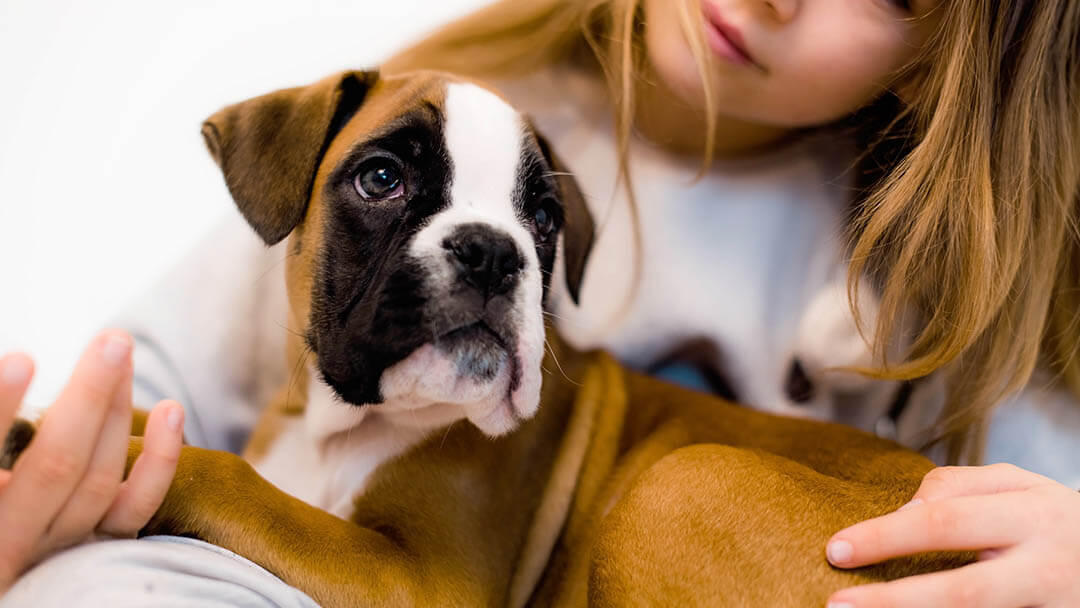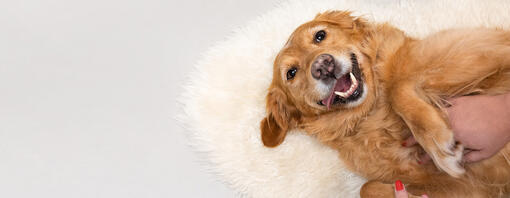
You may have noticed some grey hairs on your dog or sensed that they’ve started to slow down a little – or in some ever-youthful breeds, have got a bit more sensible. Just like in humans, this is all perfectly normal as they approach their senior years, but it is important to make sure your veteran dog remains healthy and happy.
When does my dog become a senior?
Just like us, dogs get older gradually - there’s no exact age that they become “senior”, but they can usually be considered to be of an older age between 5-9 years old. The age that your pet is considered to be “older” depends on what dog you have, as typically smaller dogs have a much longer lifespan than giant breeds – so a giant breed will be a senior at five to six years old while a smaller one will be very much in their prime at that age.
And of course, every dog is an individual. We all know people who continue to climb mountains and run marathons in their 80s, and others who seem very elderly indeed in their 60s. IN this, as in all things, be guided by your dog.
Large and giant breeds may show signs of ageing much earlier while small dogs, who generally live the longest, may not even show hints of becoming veterans until they’re eight or nine plus.
Lifestyle factors, such as diet, exercise and medical history all play a part in how long a senior dog will live, but the important thing to remember is that your later years together should be some of your most rewarding. After all, you’re both wiser as well as older – and you have spent years building your relationship and your bond!
Read our tips below on how to make the later years of your dog’s life some of the most rewarding.
Home life
It used to be thought that old age brought a whole range of joint pain and stiffness but thankfully that no longer has to be the case. Pain medication has got much better and far safer – plus there are a whole range of complementary therapies to support the older dog – such as physiotherapy, hydrotherapy, dietary supplements etc. There is no reason for your older dog to be uncomfortable or worse, suffering chronic pain.
If you have any suspicions that your dog is slowing down due to discomfort or pain, visit your vet. However, always remember that you will be the best person to assess whether your dog is in pain, as you know them well and see them every day and will spot any changes.
Contrary to popular opinion, unless there is an obvious clinical condition, your vet can’t tell you for sure if your dog is in pain or not (because your dog can’t talk!), but they can suggest a pain trial – a short course of pain relief - to see if that makes a difference.
Also talk to them about possible complementary therapies to support your canine oldie. These should always be discussed with your vet and not via some random online group!
Just like us, your dog will appreciate a big soft bed to snuggle into, particularly as they age and become more susceptible to feeling the cold and want to nap more. Put it somewhere warm and quiet, away from draughts but still close by you. Have a comfortable bed in every room you and your dog are likely to spend time in.
Always make sure they’ve got a bowl of clean water nearby so they don’t have to search for it or take unnecessary trips up and down stairs which can lead them to getting dehydrated.
Put feeding bowls on a carpeted surface and not on a slippery floor – as it can put a strain on muscles and joints standing to eat and trying not to slide around at the same time. Consider the height of their bowls too. Stretching down to the floor can be more difficult as a dog ages, and they might well prefer a raised bowl. Very elderly dogs may appreciate you sitting on the floor with them and holding their bowl.
Put rugs down on slippery floors where your dog regularly walks or plays.
When you’re out and about you may find that your senior dog isn’t as agile as they once were. Arthritic or stiff joints might make it hard for them to jump in and out of the car in the way they used to, so you may need to lift a small dog or provide a ramp for your larger elderly friend.
For older dogs, exercise is still very important but instead of taking long walks, split exercise periods into several shorter walks which will put less strain on joints and muscles.
If you have a multiple dog household, make some of your walks with your elderly canine, solo walks – as when out with other dogs, the temptation to push themselves to keep up is huge, and while they might enjoy it at the time, they can suffer for it with stiff and achy muscles the next day.
Even if exercise is reduced, enrichment needs to be prioritised. A dog’s sense of smell is always incredible – even if their other senses are fading – so focus on scent games, sniffaris, and give them plenty of time to check out interesting sniffs on their daily walks.
Continue to play games with your dog – but make these more gentle without any abrupt stops, starts or turns.
Avoiding obesity is very important for your older dog, as putting on weight can lead to medical issues. If you have any concerns about your dog’s waistline, your vet or vet nurse will be able to help you put together an appropriate diet and exercise plan for your elderly dog that takes into account any underlying conditions such as osteoarthritis.
Just like us, senses can begin to dull or fade as your dog ages. You may need to point things out to them that they used to easily be able to see.
If you suspect your older dog’s hearing is not as sharp as it used to be, try to avoid any surprise situations. For example, avoid any sudden loud noises when they’re asleep – and don’t touch them when they are asleep or dosing as they might not know that you are there.
When you are out walking, they might not have good directional hearing or be able to hear you at all, and so using a long line rather than having them off-lead is often much safer.
Remember that none of us are getting any younger, so be kind and patient as your older dog gets used to all their physical and mental changes.
While your dog’s exercise and training needs might decrease, their love for you doesn’t and they need as much, if not far more, social contact with you. Create low impact, low energy games they will love playing with you, spend time grooming them, and just hang out with them quietly. Don’t think that they don’t need your attention just because they can’t do long walks anymore – this is the time they need your love more than ever.
With excellent veterinary care and a few changes to your daily routine, you can improve your older dog’s quality of life for many years to come.
Senior dog nutrition
Changing needs
As the owner of a senior dog, it’s important to understand their changing nutritional needs. From about the age of seven (depending on their breed) they will start to take life a little easier. Senior dogs are usually less active than they used to be, and have a slower metabolism, so they don’t need as many calories. As the body slows down, it uses less energy, so the tendency to deposit fat is increased. What older dogs need to maintain their healthy weight is high quality, easy-to-digest protein.
A dedicated senior dog food will make sure that the new needs of your older dog are met and may also be easier on their tummy and teeth. For more information, see our How to feed a senior dog page.
Loss of appetite
If your older dog appears reluctant to eat, check with your vet that there’s not an underlying medical reason. Older dogs can often suffer from undiagnosed dental issues, and this is often the reason for loss of appetite – especially if your dog has always previously enjoyed their food.
There could be a very simple solution – like feeding them little and often rather than over-facing them with big meals, varying the textures and flavours in their food or warming it up a bit to release those tasty smells!
Also consider where you put the feeding bowl to make sure it isn’t uncomfortable to get to or eat from.
Purina brands for senior dogs
Several Purina brands offer formulas specifically developed to meet the needs of older dogs. Discover out senior dog food here.
Regular check-ups for senior dogs
Like us, older dogs can be more prone to certain health problems. Some of these may be a natural part of getting older, but other senior dog health issues are very treatable. Regular check-ups are the best way to keep your dog in good health throughout their senior years.
Regular check-ups are a must for your older dog’s health, so much so that some veterinary practices run special nurse clinics for older pets. These appointments give your vet nurse the opportunity to weigh your senior dog and give them a thorough check over. If they have any concerns, they can arrange to take blood and urine and analyse them for certain diseases known to affect older dogs. Vaccinations, worming and flea treatments must continue into your dog’s senior years.
Skin, coat and nails
To keep your senior dog’s skin, coat and nails healthy, make sure you continue your dog’s regular grooming routine (whether that is daily or weekly) and use this as an opportunity to check your dog for lumps, bumps, sores or any other physical changes.
Make sure grooming equipment is gentle, and that if you bath your dog, that you take care to avoid slippery surfaces, use warm (not hot) water, and make sure they are properly dried afterwards.
Keep an eye on their nails, as now they’re less active, they may not get as worn down as before. If you suspect they’re uncomfortable, overgrown or in-growing, make sure you take them to the vet.
Dental checks
Since older dogs are prone to gum disease, dental issues, and plaque build-up, it’s important to take your senior dog for routine dental appointments as well as their regular health checks.
Canine cognitive dysfunction
As some dogs age, their cognitive abilities can decrease. Dogs who develop this can seem confused, disorientated, might lose toilet training, have a decrease in activity levels and show a disinterest in doing things they usually enjoy, become anxious or irritable, have a change of sleep pattern (including night pacing), and can become quite different in their interaction for familiar people (sometimes appearing not to recognise them). This is similar in many ways to Alzheimer’s disease in humans.
If you suspect any of these symptoms, visit your vet as soon as possible, as there is excellent medication that can help your dog and slow the process of CCD.
Signs and symptoms of ageing
As well as lots of love and proper nutrition, knowing what to look out for is an important part of helping your pet stay as healthy and happy as possible during their golden years.
If you recognise any of the above symptoms, or you’re concerned about any other signs of illness such as vomiting, diarrhoea, loss of appetite, weight loss or weight gain or reluctance to exercise, contact your vet.

